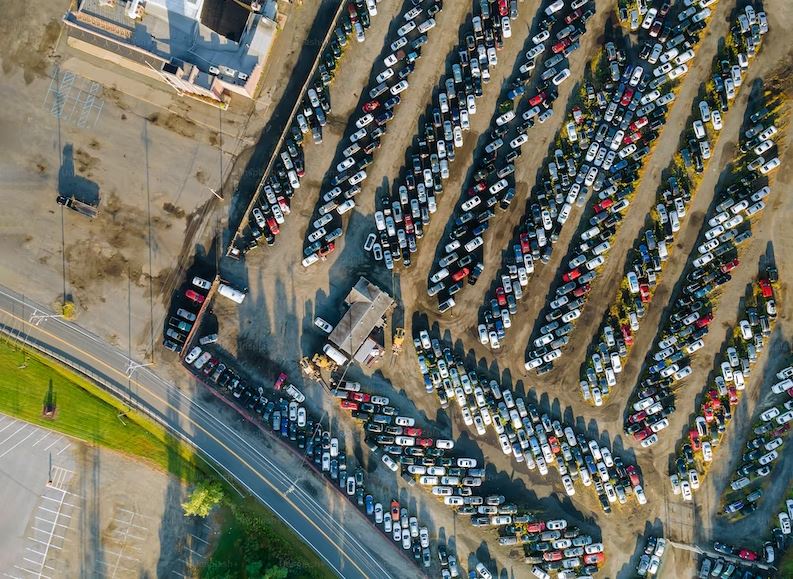The advent of autonomous vehicles has ushered in a new era in the automotive landscape, poised to revolutionize not only the way we travel but also how we predict and manage traffic flow. This blog explores the profound implications of autonomous vehicles on traffic flow prediction, delving into the potential changes, challenges, and benefits associated with this transformative technology.
Understanding Autonomous Vehicles
Autonomous vehicles, often referred to as self-driving cars, are equipped with advanced technologies such as sensors, cameras, and artificial intelligence algorithms that enable them to navigate and make decisions without human intervention. As these vehicles become increasingly prevalent on our roads, their impact on various aspects of transportation, including traffic flow prediction, becomes a subject of significant interest.
Altered Traffic Dynamics
One of the primary ways autonomous vehicles influence traffic flow prediction is through their ability to communicate with each other and with infrastructure. This communication facilitates real-time data exchange, allowing vehicles to share information about their speed, route, and traffic conditions. As a result, traditional models of traffic flow prediction, which rely on historical data and statistical analyses, may need to evolve to incorporate this dynamic and instantaneous exchange of information.
Enhanced Accuracy in Predictions
The integration of autonomous vehicles into traffic systems holds the promise of significantly improving the accuracy of traffic flow predictions. With vehicles communicating their intentions and responding to changing conditions in real-time, predictive algorithms can leverage this wealth of data to generate more precise forecasts. This enhanced accuracy not only benefits individual drivers by providing timely and reliable information but also contributes to overall traffic management efficiency.
Mitigating Traffic Congestion
Autonomous vehicles have the potential to play a pivotal role in alleviating traffic congestion, a common challenge in urban areas. By optimizing their routes based on real-time traffic data and adjusting their speed to maintain a smooth flow, these vehicles can contribute to a more efficient use of roadways. As traffic congestion decreases, the accuracy of traffic flow predictions is likely to improve further, creating a positive feedback loop.
Challenges on the Horizon
While the integration of autonomous vehicles brings forth numerous opportunities, it also presents challenges for traffic flow prediction systems. The coexistence of autonomous and traditional vehicles, each operating with different capabilities, introduces complexities. Additionally, ensuring the security and privacy of the data transmitted between vehicles and infrastructure becomes a crucial consideration in the development of robust traffic prediction models.
Future Prospects and Adaptation
As autonomous vehicles continue to evolve, so too will the methods and technologies employed in traffic flow prediction. The future promises a transportation landscape where predictive models seamlessly integrate data from both human-driven and autonomous vehicles, offering a comprehensive understanding of traffic dynamics. This adaptability will be essential to harness the full potential of autonomous technology in optimizing traffic flow.
The Transition Period
As the transition to an era dominated by autonomous vehicles unfolds, a hybrid period is likely to emerge, characterized by the coexistence of traditional and self-driving cars. During this transitional phase, the challenges and opportunities in traffic flow prediction become even more pronounced. Ensuring a smooth integration of autonomous vehicles into existing traffic systems requires a delicate balance, with predictive models adapting to the evolving mix of human-driven and self-driving vehicles on the road.
Data Security and Privacy Considerations
The exchange of real-time data among autonomous vehicles and with infrastructure introduces a critical dimension of data security and privacy. As traffic flow prediction systems become more reliant on instantaneous data sharing, robust measures must be in place to safeguard this information from unauthorized access and malicious use. Addressing these concerns is imperative to foster public trust in the technology and encourage widespread adoption.
Environmental Implications
Beyond the immediate impact on traffic dynamics, the widespread adoption of autonomous vehicles has environmental implications. Traffic flow optimization, facilitated by the predictive capabilities of autonomous technology, can lead to more fuel-efficient and eco-friendly driving patterns. Reduced congestion and smoother traffic flows contribute to lower emissions, aligning with broader sustainability goals and highlighting the interconnectedness of technological advancements and environmental considerations.
Urban Planning and Infrastructure Adaptation
As autonomous vehicles become integral to the transportation ecosystem, urban planners and infrastructure developers will need to adapt to accommodate the changing dynamics. The design of roadways, traffic signals, and parking facilities may undergo transformations to align with the needs of autonomous vehicles. Predictive models will play a crucial role in informing these adaptations, ensuring that infrastructure evolves in tandem with the evolving nature of traffic flow.
Societal Impacts
The societal impacts of autonomous vehicles extend beyond the realm of transportation. Changes in commuting patterns, reduced reliance on traditional ownership models, and potential shifts in the concept of travel time are aspects that traffic flow prediction models may need to encompass. Understanding these broader societal implications is essential for crafting comprehensive and effective predictive models that anticipate and adapt to the evolving needs of individuals and communities.
Navigating Uncharted Territory
In navigating the uncharted territory of autonomous vehicles and their impact on traffic flow prediction, it is evident that the journey involves a continuous process of adaptation and refinement. The interplay between technological advancements, regulatory frameworks, and societal expectations creates a dynamic landscape where predictions must be flexible and responsive to change. Embracing uncertainty becomes a key tenet as we steer toward a future where autonomous vehicles redefine the very fabric of our transportation systems.
Evolving Traffic Management Strategies
The integration of autonomous vehicles introduces a paradigm shift in traditional traffic management strategies. The ability of these vehicles to communicate and adapt in real-time necessitates a reevaluation of how traffic authorities approach congestion, safety, and overall road network optimization. Predictive models must evolve to accommodate the dynamic nature of autonomous systems, offering insights that empower authorities to proactively address potential challenges and capitalize on opportunities for enhanced traffic management.
Reshaping Commuter Behavior
The widespread adoption of autonomous vehicles is poised to reshape commuter behavior on a fundamental level. As these vehicles become more prevalent, commuters may experience a fundamental shift in their approach to travel. The predictability and efficiency associated with autonomous systems could influence decisions related to route planning, travel times, and even the concept of vehicle ownership. Predictive models need to anticipate and adapt to these evolving behavioral patterns, providing valuable insights into the changing dynamics of transportation demand.
In the wake of this behavioral revolution, traditional vehicles face a new trajectory, especially those at the end of their lifecycle. The emergence of autonomous vehicles aligns with a growing awareness of sustainability, prompting a reevaluation of the fate of older automobiles. Services like Scrap Cars in Sydney emerge as crucial players in this transition. By providing environmentally responsible solutions for retiring vehicles, these services become integral components in the broader narrative of sustainability and the changing landscape of urban transportation. As commuters navigate the evolving choices in mobility, the responsible disposal of older cars contributes to a more sustainable and forward-thinking approach to the entire lifecycle of vehicles.
visit: https://ipickyourcar.com.au/cash-for-scrap-cars/
Regulatory Frameworks and Standardization
The deployment of autonomous vehicles on a large scale necessitates the establishment of robust regulatory frameworks and industry standards. Predictive models must consider the implications of varied regulations across regions and the evolving nature of these standards. The harmonization of regulations and the establishment of clear standards become integral components in ensuring the seamless integration of autonomous technology into existing traffic flow prediction systems.
Safety Considerations in Autonomous Environments
Safety remains a paramount concern in the realm of autonomous vehicles. Predictive models should not only focus on optimizing traffic flow but also incorporate features that enhance safety. Understanding how autonomous vehicles interact with each other and with traditional vehicles, pedestrians, and cyclists becomes crucial. The predictive capabilities need to extend beyond congestion prediction to encompass scenarios that enhance overall road safety in the context of a mixed environment.
Economic Impacts and Industry Evolution
The introduction of autonomous vehicles carries significant economic implications, impacting industries ranging from transportation and logistics to insurance and beyond. Predictive models must account for the economic shifts associated with increased automation, potential job displacement, and the emergence of new business models. Anticipating the economic impacts enables policymakers and businesses to make informed decisions that align with the evolving landscape of autonomous transportation.
Infrastructure Investments and Technological Advancements
The integration of autonomous vehicles necessitates substantial investments in infrastructure and ongoing technological advancements. Predictive models should consider the timeline and nature of these investments, predicting how evolving technologies and infrastructure enhancements will influence traffic patterns. Understanding the interplay between technological developments and infrastructure readiness is vital for creating accurate and actionable predictions.
Navigating the Complex Interplay
In navigating the intricate landscape of autonomous vehicles and their impact on traffic flow prediction, it becomes evident that the journey is marked by a complex interplay of technological innovation, regulatory frameworks, safety considerations, economic shifts, and societal changes. Predictive models serve as the compass in this journey, guiding stakeholders through uncharted territories with insights that inform decisions at the intersection of technology, policy, and societal needs.
In the midst of these transformative shifts, the automotive landscape undergoes its own evolution. The emergence of autonomous vehicles prompts a reconsideration of traditional modes of transportation, including the lifespan of individual cars. As society embraces the change brought about by autonomous technology, the need for sustainable practices in vehicle disposal becomes increasingly apparent. Services like Cash for Old Cars in Sydney exemplify this shift, offering a sustainable and economically viable solution for retiring traditional vehicles, aligning with the changing tides of transportation trends and environmental consciousness.
visit: https://ipickyourcar.com.au/cash-for-old-cars/
Conclusion
The impact of autonomous vehicles on traffic flow prediction extends far beyond the immediate optimization of roadways. It encompasses a holistic transformation of transportation systems, influencing behavior, safety, regulations, and the very fabric of our cities. As predictive models evolve to navigate this multifaceted landscape, they become instrumental in shaping a future where autonomous vehicles seamlessly integrate into the intricate dance of urban mobility, offering a glimpse into a transportation ecosystem that is safer, more efficient, and in tune with the evolving needs of our dynamic societies.


No comments yet